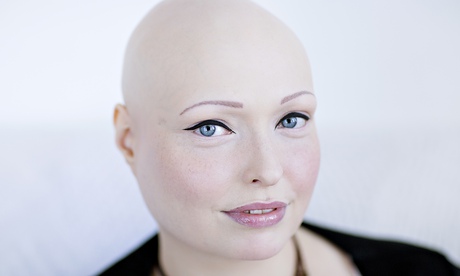
Tessa Guy has a secret tattoo. Hidden beneath her clothes is a work of art few will ever see. It may be discreet, but the inked mark on Guy's right breast changed her life. After being diagnosed with breast cancer in June 2011, the personal fitness trainer underwent a single mastectomy and endured long, painful surgery to reconstruct her chest. The areola painted around her newly formed nipple was the missing piece of the puzzle that helped her regain her confidence.
"Before I had the tattoo there was a constant reminder that something had changed. Losing a breast makes you feel you have lost a part of yourself," Guy explains. "Now when I look in the mirror, I see the two nipples line up perfectly again and no longer notice the scars. I feel like me again. I am not about to rush down to St Tropez and go topless – but I might be more comfortable doing so now than before."
Tattooing skills are now being adopted by health professionals to give new life to damaged skin. Burns, cleft lips, surgical scars and vitiligo (white patches on the skin) can be subtly disguised or corrected by carefully needling matching flesh coloured pigment into the affected area. But there is more to the treatment than just covering unsightly skin conditions – medical tattoos are also helping to heal deeper psychological wounds.
For alopecia patient Brenda Finn, being given back the eyebrows she lost along with the rest of her hair at the age of 14 transformed her life. Now 29, she admits she was a recluse for years after developing the condition as a teenager. At 17, she began rebuilding her confidence by wearing wigs and volunteering at a nursery. Her self-esteem came creeping back, but the empty patch of skin between her eyes and forehead left her feeling vulnerable and exposed, and pencilling in new brows was no substitute for the real thing. As her career advanced, Finn felt increasingly embarrassed and uncomfortable talking to clients face to face, and decided to book an appointment with a medical tattooist.
She was surprised by how in-depth her initial consultation was – they discussed everything from the type of makeup she used to the style of wigs she preferred. Two sessions and six weeks later, the effect was complete.
"Suddenly I remembered what it was like to have eyebrows again," she says. "I was so paranoid before because when I drew them on I always ended up rubbing them off. At first, friends and family thought I had had proper hair implants put in because it looked so realistic. They look so good I have to keep touching them to check if they are real. "
Advances in technology mean tattoos on offer are becoming jaw-droppingly realistic. Caron Vetter has been a medical tattooist for 20 years and now runs the Whitethorn Fields Mediclinic in Aylesbury. After completing a course in paramedical tattooing in America, she was one of the first in the UK to provide areola restoration to patients who have had breast cancer and undergone a mastectomy.
She describes how digital machines have helped to refine the quality of the tattoo. One of the most cutting edge techniques is to create "3D" nipples for women who have not had a full reconstruction. The illusion is created with shading and highlighting, allowing the patient to avoid any more painful surgery. The pigments used have also improved, and as a result, the final product lasts longer in the skin.
Vetter passionately believes that medical tattooing is vital for patient recovery and thinks it should be more freely available on the NHS. It is not, she insists, a purely cosmetic procedure. "Really the tattoo is the icing on the cake, the final cherry on top that they need to make them feel whole again," she says. "It is so important psychologically for cancer patients to allow them to move on with their life after going through that horrendous journey."
For scar victims, improving the appearance of their skin may not even require the use of pigment. A technique called MCA (multitrepannic collagen actuation) – otherwise known as dry skin needling – involves using very fine needles, but without implanting a product into the flesh. By causing trauma to the scar tissue, the raised skin is flattened and feels softer.
Sandra Bailey, medical tattoo specialist at the Harley Street clinic CosmeDocs, uses the technique to stimulate the skin's natural collagen, allowing the tissue to repair itself. After the scar tissue has been flattened, she applies what is called shallow camouflaging to the area, implanting flesh coloured pigments that perfectly match the patient's skin tone.
Bailey, who specialises in tattooing hair to cover baldness and even creates facial stubble for male alopecia patients, says the results are often instant and give the person a feeling of euphoria. She recalls the experience of a client she recently treated for a botched hair transplant that had left his scalp so horribly scarred that he wore wigs. Bailey successfully managed to blend the scar tissue perfectly with the skin tone on his forehead.
"He felt so uncomfortable and positively ugly," she says. "But after the tattoo treatment he had a new lease of life. He felt like a person and no longer a patient. That is what I am doing it for. It's about making people feel happy about their appearance and I don't think you can put a price on that."
But with the average price for vitiligo tattoos a hefty £1,754 and areola restoration setting a patient back around £264, the reality for many people is that, unless the NHS provides such treatments, they will have to learn to live with the scars or skin conditions that have left them feeling vulnerable and insecure.

